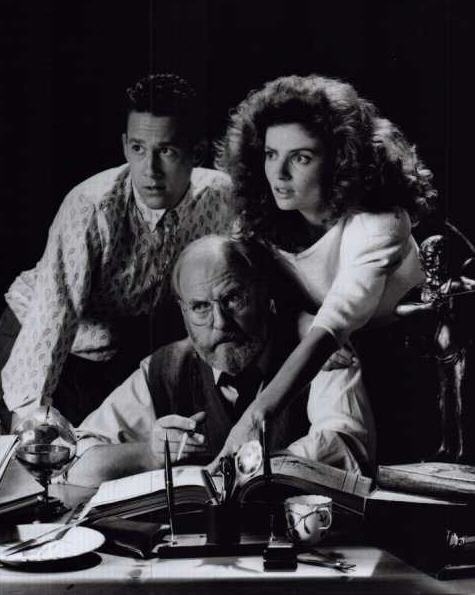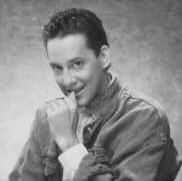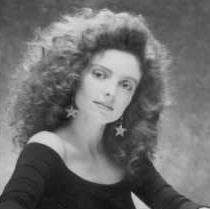

JOHN D. LEMAY - RYAN DALLION
ROBEY - MICKI
FOSTER
CHRIS WIGGINS - JACK MARSHAK

|
Above photo copyright © Paramount Pictures 1987-2000. All Rights Reserved.
Friday The 13th: The Series made its debut on
American television networks on 28 September 1987. For many viewers, the title
was somewhat misleading, and for those who tuned into the premiere episode, many
expected to see the hockey-masked maniacal killer, Jason Vorhees, who sliced and
diced unwary teenagers at Camp Crystal Lake in six separate film sequels, to
continue his weekly exploits on the small screen, which now shared the same
name. Instead, viewers were surprised, either disappointed or relieved, to see
that there was no connection between the films and the new television series,
except for the series' title and the production company, Paramount.
Friday The 13th: The Series tells the story of two young distant cousins,
Ryan Dallion and Michelle (Micki) Foster, who receive a strange inheritance from
their recently deceased uncle Lewis Vendredi, whom they never met. They are
beneficiaries of an old antique shop, filled with unusual artifacts, and in the
first ten minutes of the opening episode, the time is turned back six months and
we meet Uncle Lewis briefly. Lewis, an independent antique proprietor and
practitioner of black magic, had formed an alliance with the Devil. By
disemminating cursed antiques from his retail shop, "VENDREDI'S ANTIQUES", he
had hoped to achieve his dreams of immense wealth and immortality, but Lewis
broke the pact, for reasons which are not clearly known or explained to viewers,
and he was sent to Hell. Six months later, the cousins arrive and after a few
exchange of words, they quickly sell off the remaining inventory. Before their
departure, they are visited by Lewis' old friend, antique supplier, Jack
Marshak, who discovers that the massive inventory liquidation is about to wreak
havoc on the world. Each item in the store had been cursed by the Devil,
including items which the cousins sold, and unsuspecting individuals who have,
or about to come into contact with the antiques, will have met a painful death
or some tragic occurrence. With a guilt ridden conscience, the cousins decide
they must now track down all the antiques sold from the shop, starting with an
unusual porcelain doll which was their last item sold just hours ago. Their
investigations lead to the doll's recovery from a young girl, but not before the
youngster used it to kill off her mean stepmother. And each week, viewers are
treated to a new story, a mini-Faustian exploration in which a cursed object
grants its possessor a means to satisfy his or her greatest needs, but innocent
people must be hurt in the quest to achieve the needs. In the course of one
hour, we are led by Micki and Ryan through their suspenseful adventures in
recovering the evil goods. They are usually helped along by Jack, who has
renamed the store "CURIOUS GOODS", and whose theoretical and applied knowledge
of the occult, have proven invaluable in their quest for these 'special'
one-of-a-kind vintage goods.



Also known in the United Kingdom under the series title "Friday's Curse", executive producer, Frank Mancuso Jr., also considered but eventually rejected, alternate titles including "The 13th Hour". A newcomer to television programming, Mancuso Jr. knew he had a good premise for this project, and in a bold and daring move, named his television series after his film series. The astute businessman also adopted a contrarian approach to marketing his new series by offering it in first-run syndication rather than pitching the project to the main television networks. By employing the barter system of making the series available to smaller independent networks, Paramount Domestic Television gained valuable commercial time with which it sold to advertisers. Even though the series was placed in the late night 11 p.m. time slot in the first season, ratings were unbelievably successful, ranking in the number two spot behind Paramount's Star Trek: The Next Generation.
With the success of the first season, Mancuso Jr. emerged from hiding to meet the press and to announce the launch of the second season line-up in the fall of 1988 in the U.S.A. and the series' debut on the Canadian television networks. The series benefitted from an increase in budgetary spending with an allocation of funds to the special effects and to the writing departments. They were also able to circumvent the twenty-two week writers' strike of 1988 by drawing heavily upon Canadian scripts without violating contractual agreements as set out in the Writers Guild of America (WGA). And so, viewers were treated with five new episodes, starting with "Doorway To Hell". While fans were excited with the prospects of seeing richer storylines developed, combined with improved special effects, and now being able to view episodes at more reasonable time slots during prime time hours, the series also began to attract a wider audience, and hence, came under the scrutiny of several religious organizations and parental groups of school-aged children, who collectively voiced their complaints against the show for its high-level of violent content deemed inappropriate for prime time television, as well as its portrayal of an immoral subject matter, the occult. Viewers were not open to the horror genre, in general, even though our heroes were always battling against evil. Regardless, the series continued to shine in ratings. It also received a 1988 Emmy award nomination for OUTSTANDING ACHIEVEMENT IN GRAPHIC DESIGN, followed by 1989 Gemini award nominations for BEST DIRECTION for the episodes "Scarlet Cinema" and "The Sweetest Sting," and in 1990 for "Jack In The Box", all of which were directed by Alberta filmmaker David Winning.
At the end of the second season, John D. LeMay decided to leave the show to pursue other career goals. His exit from the series was carefully planned out, and in a two-hour third season opener, the character of Ryan was killed off in an ingenious way. Titled "The Prophecies", Ryan becomes a pawn to Satan's fallen angel, Astaroth, and sacrifices himself to prevent the murder of a young girl in a wheelchair, which would have fulfilled the last of six prophecies as set out by Satan to rule the world. Ryan's sacrifice reverted him back into an elementary school-aged child. With no recollection of his adult life, he was able to live his life again, but this time with neither the pain and guilt of his younger brother's accidental death nor the tragedies involved in recovering his uncle's cursed antiques. The storyline tied up many loose ends and unanswered questions about Ryan, thus enabling viewers to better understand the story behind his character.
Since its debut in Europe in the fall of 1989, Friday The 13th: The Series has continued to generate a high level of interest amongst viewers in countries such as Germany and England. Moreover, select episodes are available on video on PAL format from UK video retailers. Unfortunately, the UK SCIFI network lost the rights to air the series in the mid 1990s. Canadian networks also ran all three seasons continuously until August 2000. And after a short break, Canada's newest digital cable network Scream Television has begun airing episodes daily since September 2001. The SCI-FI (USA) network ran the series for close to ten years on a daily basis plus mini marathons on select Fridays of each month. And more recently The Chiller TV network, available only on satellite on DirecTV airs episodes daily. Fans around the world remain loyal supporters of the series with hopes that some day some, if not all, episodes will be released on DVD format, and that the series' producers would consider releasing a reunion movie with a storyline that would give the series proper closure.
Friday The 13th: The Series is produced by Triumph Entertainment Corporation of Canada, in conjunction with Hometown Films, and is distributed by Paramount Domestic Television. Key executive personnel include Frank Mancuso Jr. as executive producer and series creator, John Anderson, as supervising producer, and Larry B. Williams, as series co-creator.
Visit The 13th Hour for a transcript of John's December 1999 interview.